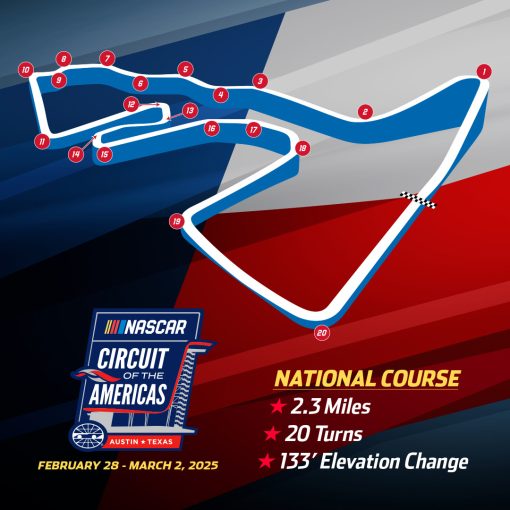The China Factor: Why Luxury Car Brands Face Headwinds In The World's Largest Auto Market

Table of Contents
Intense Domestic Competition
The Chinese luxury car market is experiencing a surge in domestic brands, posing a significant challenge to established international players. This intense competition is reshaping the landscape, forcing foreign automakers to adapt quickly.
Rise of Domestic Luxury Brands
The rapid growth of Chinese luxury car brands like Hongqi, Nio, and BYD's high-end sub-brand, Yangwang, is undeniable. These brands are leveraging advanced technology, competitive pricing, and a strong appeal to national pride to capture significant market share.
- Hongqi: Known for its opulent designs and government backing, Hongqi has successfully positioned itself as a premium domestic alternative.
- Nio: A leader in electric vehicles (EVs), Nio offers innovative battery-swapping technology and a strong digital ecosystem.
- BYD's Yangwang: This newcomer is focused on high-performance luxury EVs, showcasing cutting-edge technology and bold designs.
These domestic brands are not merely competing on price; they are also challenging established players in technology and brand image. This represents a major threat to international luxury automakers who are accustomed to dominating the high-end market.
Joint Ventures and Local Partnerships
Many international luxury brands have entered the Chinese market through joint ventures or partnerships with local companies. While this strategy offers access to local expertise and distribution networks, it also presents complexities.
- Advantages: Access to established distribution channels, deeper understanding of the local market, and cost savings.
- Disadvantages: Potential loss of control over brand image and intellectual property, challenges in aligning corporate cultures, and navigating complex regulatory environments.
Successful partnerships require a deep understanding of Chinese business culture and a willingness to adapt to local conditions. Intellectual property protection remains a significant concern, necessitating robust legal frameworks and vigilant oversight.
Shifting Consumer Preferences and Expectations
The Chinese luxury car market is not static; consumer preferences are constantly evolving, demanding adaptation from luxury brands.
Technological Advancements
Chinese luxury car buyers are highly tech-savvy and demand advanced features. This translates to a strong preference for electric vehicles, autonomous driving capabilities, and seamless digital integration.
- Electric Vehicles (EVs): The demand for EVs is booming in China, fueled by government incentives and growing environmental awareness.
- Autonomous Driving: Advanced driver-assistance systems (ADAS) and self-driving features are highly sought-after.
- Connectivity: Seamless smartphone integration, over-the-air updates, and advanced infotainment systems are crucial.
Luxury brands failing to keep pace with technological innovation risk losing market share to more agile competitors.
Evolving Consumer Tastes
Understanding the evolving tastes of Chinese luxury car buyers is critical. This involves acknowledging their preferences for specific brands, features, and design aesthetics, which are often influenced by social status and cultural nuances.
- Brand Loyalty: While brand loyalty exists, it's not as entrenched as in some Western markets. Chinese consumers are open to exploring new brands.
- Social Status: Luxury cars remain strong status symbols in China, impacting buying decisions.
- Design Preferences: Chinese consumers often favor bolder, more expressive designs compared to some Western markets.
Thorough market research, encompassing cultural nuances and consumer insights, is vital for tailoring products and marketing strategies effectively.
Regulatory Landscape and Government Policies
Navigating the regulatory landscape in China is a significant challenge for luxury car brands. Stringent regulations impact production costs, pricing, and market access.
Emission Standards and Environmental Regulations
China has implemented increasingly stringent emission standards and environmental regulations, pushing the industry toward electric and hybrid vehicles.
- Fuel Efficiency Standards: These standards directly impact the types of vehicles that can be sold and the production costs associated with compliance.
- Electric Vehicle Mandates: Government incentives and mandates are accelerating the adoption of EVs.
- Carbon Emission Targets: China's commitment to reducing carbon emissions creates pressure on automakers to adopt sustainable practices.
Failure to comply with these regulations can lead to significant penalties and hinder market access.
Import Tariffs and Taxes
High import tariffs and taxes significantly increase the cost of luxury cars imported into China, making them less competitive against domestically produced vehicles.
- Impact on Pricing: These taxes directly affect the final price paid by consumers, potentially pricing some brands out of the market.
- Strategies for Mitigation: Strategies such as local manufacturing and optimizing supply chains can help mitigate the impact of tariffs.
These factors create a challenging environment for international luxury car brands seeking to maintain profitability.
Conclusion
The "China Factor" presents a unique set of challenges for luxury car brands operating in the world's largest automotive market. Intense domestic competition, evolving consumer preferences, and a complex regulatory landscape all contribute to this dynamic environment. Mastering the China Factor requires a deep understanding of the market's nuances, including the rapid technological advancements, the evolving tastes of Chinese consumers, and the ever-changing regulatory framework.
Key Takeaways:
- Domestic brands are rapidly gaining market share.
- Technological innovation is paramount.
- Understanding Chinese consumer preferences is crucial.
- Compliance with regulations is essential for market access.
Mastering the China Factor is crucial for navigating the world's largest automotive market. Conduct thorough market research and adapt your strategies accordingly to thrive in this dynamic environment. Ignoring the China factor will undoubtedly hinder your success in the global luxury car industry.

Featured Posts
-
 Could Ashton Jeanty Lead The Denver Broncos To Super Bowl Victory
Apr 25, 2025
Could Ashton Jeanty Lead The Denver Broncos To Super Bowl Victory
Apr 25, 2025 -
 Is Apple Tv Becoming The Premier Destination For Crime Thrillers
Apr 25, 2025
Is Apple Tv Becoming The Premier Destination For Crime Thrillers
Apr 25, 2025 -
 Stagecoach 2025 Livestream Your Guide To Watching The Festival Online
Apr 25, 2025
Stagecoach 2025 Livestream Your Guide To Watching The Festival Online
Apr 25, 2025 -
 10 Key Facts About The 2025 Los Angeles Marathon
Apr 25, 2025
10 Key Facts About The 2025 Los Angeles Marathon
Apr 25, 2025 -
 The Future Of Abuse Reform In The Catholic Church After Pope Francis
Apr 25, 2025
The Future Of Abuse Reform In The Catholic Church After Pope Francis
Apr 25, 2025
Latest Posts
-
 Bubba Wallaces Impact Motivating Austin Youth Before Cota Nascar Event
Apr 28, 2025
Bubba Wallaces Impact Motivating Austin Youth Before Cota Nascar Event
Apr 28, 2025 -
 Austin Teens Find Inspiration In Bubba Wallace Ahead Of Cota
Apr 28, 2025
Austin Teens Find Inspiration In Bubba Wallace Ahead Of Cota
Apr 28, 2025 -
 Bubba Wallace Inspiring Austin Teens At The Cota Nascar Race
Apr 28, 2025
Bubba Wallace Inspiring Austin Teens At The Cota Nascar Race
Apr 28, 2025 -
 Nascars Bubba Wallace Inspires Austin Teens Before Cota Race
Apr 28, 2025
Nascars Bubba Wallace Inspires Austin Teens Before Cota Race
Apr 28, 2025 -
 Bubba Wallace On The Encouraging Messages From Michael Jordan
Apr 28, 2025
Bubba Wallace On The Encouraging Messages From Michael Jordan
Apr 28, 2025
